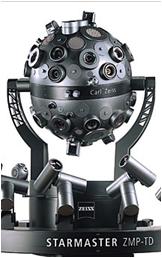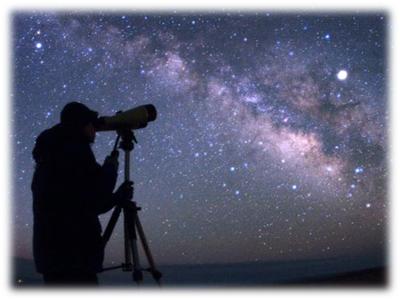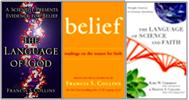[click on title to be redirected to The Standard Times]
Dr. Guillermo Paz-y-Miño C. — © 2011
Department of Biology, University of Massachusetts Dartmouth
Science is just a refined device for resolving ordinary curiosity and a powerful liberator of superstition. It is the subsistence kit to defeat re-emerging fundamentalism. And by recalling Giordano Bruno’s and Galileo’s past, as Santayana reasoned over the value of remembering history, we restate our right to learn the truth. This is why Boston’s Charles Hayden Planetarium is more than a “light show,” but a salutation to the triumph of scientific inquiry over blind belief…
Giordano Bruno was not as fortunate as Galileo to opt for the imprisonment of his body in trade for thinking and writing about cosmology under house arrest. The Roman Inquisition orchestrated Bruno’s “civil” burning in 1600, at age 52, for blasphemy and heresy, and for conjecturing that the sun was a star and that God and the universe were one and the same.

Statue of Giordano Bruno by Ettore Ferrari (1845-1929), Campo de’ Fiori, Rome, Italy
Galileo’s fate, as philosopher, physicist and astronomer, was more honorable than Friar Bruno’s. Although the Catholic church did find Galileo “vehemently suspect of heresy” in 1633, for defending Copernicus’ proposal that the sun, not the Earth, was at the center of planetary orbiting, his precious mind could not be smoked by the clergy, nor smoldered by the populous, but rather retreated to concealed productivity. And so the church chaperoned Galileo’s brainpower until age 77.

Galileo Galilei (as depicted by Justus Sustermans in 1636) and his “Faces of the Moon”
 “Those who cannot remember the past are condemned to repeat it” proclaimed the Spanish-American logician George Santayana (image left) [or “The One Who Does Not Remember History Is Bound To Live Through It Again“]. Indeed, recalling Bruno’s or Galileo’s tale is not pointless. It reminds us that exploring the cosmos can be obstructed by irrationalism, and that our worshipping for free science must continue to safeguard humanity’s scientific legacies. It alerts us that the word “obscurants” was coined to denounce those who veil facts from the public.
“Those who cannot remember the past are condemned to repeat it” proclaimed the Spanish-American logician George Santayana (image left) [or “The One Who Does Not Remember History Is Bound To Live Through It Again“]. Indeed, recalling Bruno’s or Galileo’s tale is not pointless. It reminds us that exploring the cosmos can be obstructed by irrationalism, and that our worshipping for free science must continue to safeguard humanity’s scientific legacies. It alerts us that the word “obscurants” was coined to denounce those who veil facts from the public.
And this brings me to the cosmic celebration role played by the renovated Charles Hayden Planetarium in Boston, but not before urging an equal revamp of its host, the Museum of Science itself.
Nitpicking aside, each “Undiscovered Worlds,” “Explore the Universe,” “Cosmic Collisions” or “The Sky Tonight” show is a tribute to centuries of space explorations, and a joyful remembrance that, despite Bruno’s sadistic silencing and Galileo’s confinement, the empirical truth prevailed over institutionalized ignorance.
 The audience’s amazement while watching the planetarium animations is contagious. A Zeiss Starmaster projector (image left) creates the illusion of space travel and it is fun to go along. Visual and sound effects impress human senses and the virtual take-off in a helicopter, from the museum’s roof, while flying over Boston and metamorphosing into a spaceship that leaves Earth to immerse itself into galactic infinitude is magnificent.
The audience’s amazement while watching the planetarium animations is contagious. A Zeiss Starmaster projector (image left) creates the illusion of space travel and it is fun to go along. Visual and sound effects impress human senses and the virtual take-off in a helicopter, from the museum’s roof, while flying over Boston and metamorphosing into a spaceship that leaves Earth to immerse itself into galactic infinitude is magnificent.
Not surprisingly for an institution accountable for promoting science literacy, the planetarium has adopted clever marketing slogans: “Discover the beauty and wonder of the night sky that has fascinated humanity for millennia,” or “We have learned that our solar system is not alone in the universe, and we have had to redefine our understanding of planets and solar systems,” and my favorite “Explore cosmic collisions, the hypersonic impacts that drive the dynamic and continuing evolution of the universe.”
And pro evolution aphorisms are vital for the 40 percent of New Englanders who still do not accept the reality of evolution and seek —together with 70 percent of their equally incredulous American counterparts— air-conditioned recreation at summer museums.
And in a free-market society where the Book of Genesis sells more than the Book of Reason, the Boston Museum of Science and its planetarium must compete not only with reputable national co-exemplars of proper public outreach, but with impostor “sister institutions,” like the “creation museums” and “Genesis parks” emerging in the United States, where pseudoscience and intelligent design are smuggled in planetaria and aquaria format to depict foolishness, and so lure thousands of ticket buyers to harass plastic dinosaurs and inhale Eden.
 The night sky image by Babak Tafreshi, Lennart Nilsson scientific photography prize, 2009
The night sky image by Babak Tafreshi, Lennart Nilsson scientific photography prize, 2009
But the Boston Museum of Science has just deployed an antidote to such pseudo-dinosauria frenzy: the exhibit “Dinosaurs: Ancient Fossils, New Discoveries,” open until Aug. 21 (2011), is another tribute to genuine science, and a co-effort with accredited institutions, including the American Museum of Natural History, Houston Museum of Natural Science, California Academy of Sciences, The Field Museum, and the North Carolina Museum of Natural Sciences.
Science is just a refined device for resolving ordinary curiosity and a powerful liberator of superstition. It is the subsistence kit to defeat re-emerging fundamentalism. And by recalling Giordano Bruno’s and Galileo’s past, as Santayana reasoned over the value of remembering history, we restate our right to learn the truth. This is why Boston’s Charles Hayden Planetarium is more than a “light show,” but a salutation to the triumph of scientific inquiry over blind belief. — © 2011 by Guillermo Paz-y-Miño-C. all rights reserved


Fluffy, the “Galileo of the Lemmings,” with his stopwatch



 “Those who cannot remember the past are condemned to repeat it” proclaimed the Spanish-American logician
“Those who cannot remember the past are condemned to repeat it” proclaimed the Spanish-American logician  The audience’s amazement while watching the planetarium animations is contagious. A Zeiss Starmaster projector (image left) creates the illusion of space travel and it is fun to go along. Visual and sound effects impress human senses and the virtual take-off in a helicopter, from the museum’s roof, while flying over Boston and metamorphosing into a spaceship that leaves Earth to immerse itself into galactic infinitude is magnificent.
The audience’s amazement while watching the planetarium animations is contagious. A Zeiss Starmaster projector (image left) creates the illusion of space travel and it is fun to go along. Visual and sound effects impress human senses and the virtual take-off in a helicopter, from the museum’s roof, while flying over Boston and metamorphosing into a spaceship that leaves Earth to immerse itself into galactic infinitude is magnificent. The night sky image by Babak Tafreshi, Lennart Nilsson scientific photography prize, 2009
The night sky image by Babak Tafreshi, Lennart Nilsson scientific photography prize, 2009

You must be logged in to post a comment.